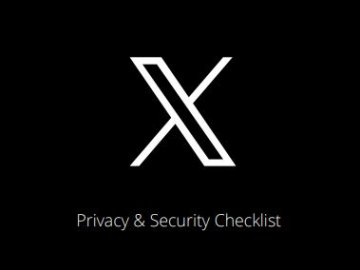What are social media platforms doing to tackle bullying?
Let’s be frank: cyberbullying sucks.
The internet is so full of potential for learning, connection and exploration, but it has also opened up the potential for new ways of behaving unkindly.
Platforms have a responsibility to protect their users and can sometimes face harsh criticism for not doing enough. Whilst this can sometimes be the case, we think it’s important that they get the recognition they deserve when they do take steps to protect their users.
That’s why we’ve written this article, to run you through what the major social media networks are doing to combat bullying. With Anti-Bullying Week coming up, we hope these pointers can help empower you to stamp out bullying if you encounter it online.
In a recent announcement, Instagram unveiled a new tool to help users combat harmful content from other users. The Restrict feature is “designed to empower you to quietly protect your account while still keeping an eye on a bully” – which is kind of a dream solution, right?
In a similar vein, Instagram’s ‘Encouraging Positive Interactions’ is an AI-powered tool, built directly into the app, that gives users a chance to reconsider when they attempt to post hurtful or bullying comments. “This intervention”, according to Instagram, “gives people a chance to reflect and undo their comment and prevents the recipient from receiving the harmful comment notification.”
Instagram also operates its wellbeing hub – a central point of brilliant advice, guides for parents and young people, and privacy checks. Brew yourself a nice cuppa and take 15 minutes to go through the site – we hope you’ll be surprised at how much you take from it.
Like Instagram (perhaps unsurprisingly, given they share the same parent company), Facebook operates a brilliant centre for managing your wellbeing when using its service. Facebook’s Bullying Prevention Hub offers resources “for teens, parents and educators seeking support and help for issues related to bullying and other conflicts”, developed in partnership with the Yale Center for Emotional Intelligence.
For a more specific guide on how to tackle bullying on Facebook, we recommend reading their bullying guide for answers to some FAQs. There is a section for teens, as well as one for parents, guardians, and educators. If you’re looking for some quick answers about bullying on Facebook, head to their bullying guide. If you’re more interested in resources and guidelines, we’d recommend taking some time to explore their Bullying Prevention Hub.
Facebook are the only major social media network currently ‘hashing’ images to prevent them being reuploaded or reshared on their platform. Their innovative photo/video-matching technologies create what is effectively a digital fingerprint, unique to an image, that can be cross-referenced against other images that are uploaded. If a user tries to upload an image that has already been hashed, Facebook will block it from being uploaded and (typically) disable the account that has attempted to upload it. This technology is used to prevent the non-consensual sharing of intimate images, as tackled by the Revenge Porn Helpline.
Snapchat
Earlier in 2019, Snapchat launched its Because of You campaign – termed “the first-ever social impact Lens Challenge”, Because of You encouraged Snapchatters to describe a time anyone – friend, family, or stranger – had a positive impact on their lives. “Designed to inspire Snapchatters to express themselves and spread kindness”, the Because of You Lens Challenge built upon Snapchat’s work with Ad Council in October 2018, in which the company developed filters, stickers, and adverts that raised awareness about bullying for Bullying Prevention Month.
Snapchat’s Safety Centre is the best place to go if you are concerned about content you receive or see on Snapchat. You can access a refresher of their community guidelines, their reporting function, and lots of other useful tools and guides on staying safe when using Snapchat.
If you are wondering about how to report, or whether you should report, something on Snapchat, they have produced a helpful page on their Support site that summarises their reporting guidelines. This page will help you navigate what may have previously been a difficult or confusing process, and is empowering users to take control of what content they consume on the app.
Hidden Replies is a feature currently being tested in the US, Canada, and Japan that helps users control the conversations under their content. Replies that you choose to hide are separated into a separate section when people view your tweet. Any Tweet that you choose to hide is moved into the Hidden Replies section, clearly noted to other users who will have to click to view any Tweets in that section, and can only be unhidden by you. Do note, however, that the author of a reply you hide will be notified of your action.
Similar to Instagram’s Restrict feature, Mute is a clever tool available to Twitter users that lets you remove an account’s Tweets from your timeline without blocking or unfollowing them. For all intents and purposes, the Muted user will have no idea you’ve done anything, whereas blocked users can work out what’s gone on if they attempt to access your profile. It should be noted, however, that a Muted user can still @mention you and will appear in your Direct Messages as normal. If you really want to stop someone’s access to you on Twitter, blocking may still be the way to go.
As with the other platforms listed in this article, Twitter has a comprehensive Help Centre with a dedicated section for fighting online abuse. This section runs you through some really useful points – not just about encountering online abuse, but about how you can manage the situation online and offline and how to manage your wellbeing.
Other platforms
There are plenty of other social networks and communication platforms out there and there are only so many words you will want to read, so let’s have a quick rundown of the best of the rest:
TikTok: Reporting inappropriate content | Work with Internet Matters
Roblox: Reporting rule violations
WhatsApp: Controlling your privacy and reporting issues
Tumblr: Community guidelines
Reddit: Report abuse
PlayStation: How to report content on PlayStation Network
Xbox: File a complaint on Xbox One
Reporting cyberbullying and harmful content
If you need help reporting cyberbullying, or any other harmful content you see online, we recommend visiting Report Harmful Content. This platform exists to help users report harmful content they interact with and, if they feel their report has not delivered the outcome they have hoped for, will mediate the case directly with the social media network in question.
We think it’s important to remind everyone of the power we have to fight cyberbullying and other forms of online abuse wherever they encounter it.
Remember – you have the power and the bullies never win!






